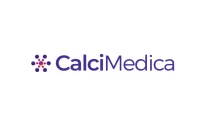WAYNE, N.J., May 25, 2018 /PRNewswire/ — Getinge, a leading global provider of innovative medical technology, today announced results from the Survival Improvement in Extensive Myocardial Infarction with PERsistent Ischemia Following IABP Implantation (SEMPER FI) pilot study. The study evaluated the use of an intra-aortic balloon pump (IABP) in patients with extensive myocardial infarction (MI, or heart attack) complicated by persistent ischemia (inadequate blood flow) following primary percutaneous coronary intervention (PCI) – a phenomenon called no-reflow. This small pilot study showed positive trends with IABP in reduction of the primary endpoint (a composite endpoint of mortality, necessity for mechanical support due to hemodynamic deterioration, such as left ventricular assist device [LVAD], and hospital readmission for congestive heart failure at six months). Results were presented yesterday in the hotline coronary interventions oral session at the EuroPCR 2018 Congress in Paris by SEMPER FI co-principal investigator Lokien X. van Nunen, M.D., of Catharina Hospital in Eindhoven, The Netherlands.
Patients with large acute MI and signs of persistent ischemia after successful stenting have a poor prognosis and are likely to develop heart failure in the future. An estimated 30 percent of patients with ST elevated MI (STEMI) continue to have persistent ischemia even after the primary culprit artery is opened.i,ii
“Determining which STEMI patients will benefit from IABP has been difficult because of varying results from retrospective and prospective studies,” said Dr. van Nunen. “We are encouraged by the results of the SEMPER FI pilot study, which showed a strong signal that IABP may be beneficial in patients with extensive acute MI who continue to experience ischemia even after stenting. We expect that these results will bear out in a trial adequately powered to demonstrate a statistically significant reduction in the composite endpoint if this trend were to continue.”
SEMPER FI Study Design and Results
The prospective, randomized, comparative, single-center SEMPER FI pilot study evaluated the use of IABP in patients with extensive MI complicated by persistent ischemia after PCI. The study included 100 patients ages 18 to 75 years with acute STEMI (characterized by summed ST-segment deviation of ≥15 mmHg) and insufficient ST-segment resolution on an ECG 10 to 30 minutes after PCI (stenting) in the catheterization laboratory. Study participants were randomized to IABP for 12 to 24 hours or no IABP according to guidelines to alleviate persisting ischemia. All were followed up for six months.
Results of this pilot study of 100 patients who presented with large acute MI showed a trend toward decreased mortality, LVAD use and hospital readmission for heart failure within six months with use of IABP. Among the IABP group, 2 percent (one patient) experienced the primary endpoint versus 8 percent (four patients) in the non-IABP group (p=0.16).
“The trend toward a mortality benefit with the use of IABP observed in the SEMPER FI pilot study is encouraging because the study was well controlled and did not allow crossover from the conventionally-treated group to IABP, which could have confounded the results,” said Dr. Claudius Diez, Chief Medical Officer, Acute Care Therapies, Getinge. “This pilot study is a testament to Getinge’s commitment to support clinical research to increase the body of knowledge for our life-saving therapies.”
About IABP Therapy
Based on extensive literature supporting the hemodynamic effects and safety and effectiveness of intra-aortic balloon counterpulsation (IABC), the U.S. Food and Drug Administration (FDA) has cleared balloon pumps for use in patients with acute coronary syndrome, patients undergoing cardiac and non-cardiac surgery, and patients experiencing complications of heart failure of both ischemic and non-ischemic etiologies.iii The FDA clearance for these indications was based on results from a comprehensive literature review of IABC devices, which demonstrated low overall rates of complications despite the fact that patients in whom an IAB was implanted had more severe comorbidities and underlying illnesses than patients without a device. Additionally, the literature shows a trend toward fewer device-related complications over time, as balloon catheter sizes have decreased and procedural techniques have improved in recent years.
About Getinge
Getinge is a global provider of innovative solutions for operating rooms, intensive care units, sterilization departments and for life science companies and institutions. Based on our first-hand experience and close partnerships with clinical experts, healthcare professionals and medtech specialists, we are improving the every-day life for people, today and tomorrow.
_______________________________________
i Rezkalla SH, Dharmashankar KC, Abdalrahman IB, Kloner RA. No-reflow phenomenon following percutaneous coronary intervention for acute myocardial infarction: incidence, outcome, and effect of pharmacologic therapy. J Interven Cardiol. 2010;23:429-436.
ii van Nunen LX, van’t Veer M, Schampaert S, et al. Intra-aortic balloon counterpulsation in acute myocardial infarction: old and emerging indications. Neth Heart J. 2013;21:554-560.
iii FDA Executive Summary https://www.federalregister.gov/documents/2013/12/30/2013-31218/cardiovascular-devices-reclassification-of-intra-aortic-balloon-and-control-systems-for-acute.
SOURCE Getinge





